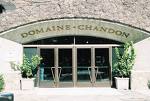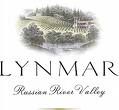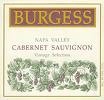It’s moving month–my wife and I are getting out of an overstuffed one-bedroom to nest in a soon-to-be-overstuffed two-bedroom in  the flats, with the plebes, in Los Angeles, CA. From our new home, we can just make out the hills where everyone wants to be, the hills from which the ‘haves’ look down upon people like me.
the flats, with the plebes, in Los Angeles, CA. From our new home, we can just make out the hills where everyone wants to be, the hills from which the ‘haves’ look down upon people like me.
If for some good reason you haven’t done this in a while, allow me to remind you what an enormous pain in the ass moving is. You’re confronted, first, with what a slob you’ve been for the past two years. Behind and beneath the furniture are dust buffalos the size of buffalos, and once they’re exposed to the light of day, you discover that they like to roam. You may wish to corral them with a broom but it’s no use, and even if you set them free over the banister, they’ll simply catch a puff of air and come back through the side door, seeking their old pasture.
You rediscover what a pathetic pack rat you are, and how you’ve come to sentimentalize the most ridiculous things–and you can’t seem to part with any of it. These include: books you’ll never read, notes for stories that will never get written (and hundreds of pens, representing thousands of yards of ink, to write them with), CDs you’ll never listen to again (not to mention cassettes), and furniture that would be condemned in a third world country.
But by far the most embarrassing collection for my wife and I is our rocks.
Yes, rocks. We like pretty rocks. We have a lot of them. My wife’s family has spent years living in the desert and rocks, so to speak, are part of her heritage (petrified wood is one thing we have a lot of). Myself, I hide under the cloak of terroir (oooh!). I like to collect souvenirs from some of the many vineyards I’ve walked through–a dark green cube of schist from Coulée de Serrant, a wedge of limestone from Corton, a smooth galet from  Chateau de Beaucastel. On the one hand these are really cool mementos; but when you’re wrapping rocks and packing them into a box that will weigh seventy-five pounds when you’re done, you are an idiot, plain and simple. And when that fact finally dawns on you, it’s soul-crushing. If you had any mind left at all, you’d crumble in despair.
Chateau de Beaucastel. On the one hand these are really cool mementos; but when you’re wrapping rocks and packing them into a box that will weigh seventy-five pounds when you’re done, you are an idiot, plain and simple. And when that fact finally dawns on you, it’s soul-crushing. If you had any mind left at all, you’d crumble in despair.
But don’t pity me. I set aside a dozen or so bottles of wine to gird my loins late in the evening, just prior to collapse. It’s the proverbial grab-box, wines that have found their way onto the wine rack and for one reason or another have gone untasted.
So these wines, completely at random, are going to get my attention, or what’s left of it. And what’s nice about conducting a random tasting like this is that random observations arise.
And most importantly, I won’t have to pack them.
The Whites:
American Chardonnay has been so predictable for the past ten years that if you do what I did, open six bottles, you expect to get six shades of vanilla. So it is wonderful, and a little weird, that in one month I can receive a half-dozen bottles of Calfornia chardonnay and, essentially none of them resemble the others; in fact the spectrum of styles was refreshingly wide.
None surprised more than Ferrari Carano. This venerable Sonoma winery has hired new winemakers (Sarah Quider makes the whites, Aaron Piotter makes the reds) and has changed  direction, dramatically, particularly with the whites. There are three new Russian River Valley Chardonnays, and they’re a huge departure from the winery’s butterball tendencies in Chardonnay (not to mention Fumé Blanc) over the years–these wines are precise and elegant, rich but well-built.
direction, dramatically, particularly with the whites. There are three new Russian River Valley Chardonnays, and they’re a huge departure from the winery’s butterball tendencies in Chardonnay (not to mention Fumé Blanc) over the years–these wines are precise and elegant, rich but well-built.
I thought two Russian River wines were remarkable: ‘Dominique,’ a brisk 2005, with flavors of fig and golden apple along with firm acids; and ‘Fiorella,’ bearing slightly more ample weight and riper, more tropical fruit. Both, however, showed remarkable restraint-‘restraint’ is not a word commonly used for Ferrari Carano–and each had a structure that was firm and lifted. Double 90s.
–Ferrari Carano, Russian River Valley (Sonoma County, California) Chardonnay ‘Fiorella’ 2005 ($34) 90
–Ferrari Carano, Russian River Valley (Sonoma County, California) Chardonnay ‘Dominique’ 2005 ($38) 90
But they weren’t the only surprise. Domaine Chandon has released a 2006 unoaked Chardonnay that has a degree of  freshness that’s rare in American Chardonnay. This one has fresh, gris-like scents of apple blossoms, lees, and white peach. It leads with an ample, broad, golden apple flavor, and its mouthfeel is plenty rich without the oak.
freshness that’s rare in American Chardonnay. This one has fresh, gris-like scents of apple blossoms, lees, and white peach. It leads with an ample, broad, golden apple flavor, and its mouthfeel is plenty rich without the oak.
–Domaine Chandon, Sonoma County (California) Unoaked Chardonnay 2006 ($20) 89
Kunde delivers its 2004 Reserve with the requisite richness and power that you’d expect from a Reserve. This wine is all about polish, built up with a slow fermentation using indigenous yeast, full malolactic and sumptuous oak. It has powerful caramel scents overlaying an aroma of apple pie. There’s plenty of viscosity on the palate; it’s rich and tropical, with flavors of peach cobbler and pear, before the oak re-asserts itself on the finish.
–Kunde, Sonoma Valley (California) Chardonnay Reserve 2004 ($35) 88
Probably the biggest and the baddest of this lot came from Joe Hurliman, winemaker for the Herzog wineries in California, who’s begun a side project called Eagles Landing. Made in tiny quantities, this wine is fairly flinty at first go, with a cracked wheat scent that follows with plenty of lees, and suggests the wine’s going to be seriously big. So it’s a relief when it leads with such gentleness, building dramatically on the palate with flavors of golden pear nectar, to a finish that is powerful, oaky, and long–never losing balance.
–Eagles Landing, Russian River Valley (Sonoma County, California) Chardonnay 2005 ($25) 91
The Rosés:
It is remarkable how many new domestic rosés have found their way to the market. It seems that local winemakers have purged themselves of their fear of association with white Zinfandel and are making charming, rich vibrant rosés from all over the state. Most of these are saignées (wines made from bled-off juice from a tank of macerating skins and juice, intended to give a red wine greater concentration) and these domestic rosés are, in general, considerably richer than their counterparts in France and Spain.
There is a new rosé from St. Francis winery–the long-standing Sonoma house. This 2006 is a blend of 75% Merlot and 25% Syrah juice, and in its youth seems a little lost in its own blockiness, with a straightforward cherry red color to go along with its vinous nose and streamlined flavors of unsweetened cherries.
–St. Francis, Sonoma County (California) Rosé 2006 ($16) 87
Closer to the mark is the rosé from Lynmar, whose vineyards approach the cool Green Valley, helping the wine show the  requisite nerve for a successful rosé. From talented winemaker Hugh Chapelle (formerly of Flowers Winery), this wine is a gorgeous pink/salmon color, and is tightly wound at the outset, with only hints of strawberry fruit beneath a waxy scent. On the palate however the wine is unleashed, with a delicious, concentrated strawberry flavor, and tannins that are quite firm and arresting.
requisite nerve for a successful rosé. From talented winemaker Hugh Chapelle (formerly of Flowers Winery), this wine is a gorgeous pink/salmon color, and is tightly wound at the outset, with only hints of strawberry fruit beneath a waxy scent. On the palate however the wine is unleashed, with a delicious, concentrated strawberry flavor, and tannins that are quite firm and arresting.
–Lynmar, Russian River Valley (Sonoma County, California) Vin Gris of Pinot Noir 2006 ($20) 89
The Reds:
The grab box offers insights on new school versus old school–and to an extent, on my take on both. The new school Pinot below (from MacPhail) and the new school Cab (from Black Coyote) are in their way irresistible. But they’re also not saying enough about where they come from–and they happen to come from two exceptionally expressive appellations, the Anderson Valley and Stags Leap District. MacPhail suffers from too much ripeness I think–and from the fact that one of its points of comparison is Williams Selyem, who make a great wine from the same vineyard. And much as I liked the flavors of the Black Coyote, I couldn’t find any of the tags I associate with Stags Leap wines–a dark, earthy, almost espresso-like grit to the flavor and the tannin–seemed to be absent. That didn’t make it a bad wine, but a victim of my expectations, I guess.
However, the Bouchaine Pinot and the Burgess Cab were classic, and there was much to appreciate in each wine. While I enjoyed them both immensely, probably more than the new school wines, it was their restraint that I was appreciating; what they left out, rather than what they put in. What I really wanted at the end of the day were two wines that fell in the middle of old and new school–a new new school, where the flavors are at once vibrant and restrained.
But our first wine is made from an unusual grape, Pinot Meunier. Domaine Chandon planted a small amount of this Champagne blending grape, and it normally figures into their sparkling wines, but they’ve been making a still wine from some of the fruit since 1989. The 2005 wine leads with a rich cherry aroma and a gentle, spicy wood-scent. On the palate it’s a bowl of simple, soft, red cherry fruit; the simplicity of the fruit give the oak a demonstrative platform.
–Domaine Chandon, Carneros (California) Pinot Meunier 2005 ($35) 88
James MacPhail’s first vintage was in 2002, and has found  access to a number of fine vineyard sites including this one, which is shared by Williams Selyem and Breggo. This wine’s soft macerated cherry scents seem a little less focused than most of Anderson Valley’s Pinot offerings, along with plenty of smoky oak. Oak dominates the attack but miraculously the palate breaks free of its influence, and the wine becomes a velvety, soft pillow of cherry fruit with a gentle finish–the oak is nowhere to be found. It’s ripe and delicious, for sure, a tad soft is all.
access to a number of fine vineyard sites including this one, which is shared by Williams Selyem and Breggo. This wine’s soft macerated cherry scents seem a little less focused than most of Anderson Valley’s Pinot offerings, along with plenty of smoky oak. Oak dominates the attack but miraculously the palate breaks free of its influence, and the wine becomes a velvety, soft pillow of cherry fruit with a gentle finish–the oak is nowhere to be found. It’s ripe and delicious, for sure, a tad soft is all.
–MacPhail, Anderson Valley(California) Ferrington Vineyard Pinot Noir 2005 ($46) 89
The Bouchaine Pinot on the other hand is quite elegant and vinous, tethered to the earth. Part of that earthiness is the result of the whole-cluster pressing that I detect in the wine’s aroma. The wine leads with tea-like scents of grape clusters and spicy dark fruit, almost to the depth of plums. On the palate it’s elegant and reserved, old school in the best way, with a lovely texture and, at a mere 13.5% alcohol, admirable restraint.
–Bouchaine, Carneros (California) Pinot Noir 2005 ($30) 91
Spicerack is a project from Marin winemakers Jonathan and Susan Pey, and they’ve done a fine job capturing the sauvage Syrah possibilities in Paso Robles. This wine has classic scents of briar and white pepper, overlaying a dark fruit profile of fig and cassis. On the palate, the wine’s flavors are very deep and intense, with a dark Petite Sirah-like intensity and gripping but supple tannins. What I like about this wine is that it’s not a fruitbomb; its flavors and especially its texture seem to come from the earth.
–Spicerack, Paso Robles (California) Syrah ‘Rack and Roll’ 2004 ($25) 90
On to the Cabs. Black Coyote is owned by a consortium of retired and semi-retired academics; the wines are made by the talented Marco DiGiulio, former winemaker at Lokoya and current winemaker at Girard, among others. Unfortunately, the wine seems to begin and end with alcohol (which clocks in at more than 15%). Your nose gets seared with the heat right off the bat. Beneath are aromas of pine fronds and cassis. On the palate the wine is generous and sweet, with a moment of ripe black currant fruit that unfortunately is cut short by alcohol, with little left in the middle.
–Black Coyote, Stags Leap District (Napa Valley, California) Bates Creek Vineyard Cabernet Sauvignon 2004 ($40) 87
Meanwhile, it’s nice to see Burgess holding true to form. The  2004 smells vinous and soft, a spiced plum compote with a fine earthy bottom note. The flavors are elegant and balanced, softly restrained like the Bouchaine, with a dark flavors of currant and plum, finished by a firm, mildly astringent tannic backbone that would sing with a steak.
2004 smells vinous and soft, a spiced plum compote with a fine earthy bottom note. The flavors are elegant and balanced, softly restrained like the Bouchaine, with a dark flavors of currant and plum, finished by a firm, mildly astringent tannic backbone that would sing with a steak.
—Burgess, Napa Valley (California) Cabernet Sauvignon 2004 ($30) 89
All right. Back to packing. My wife and I are bickering over a cream colored pitcher that someone saw fit to give us at our wedding. She wants it out. I’ve never used it, but I just know there’s going to be a day when I’m going to need it. It’s getting packed.
